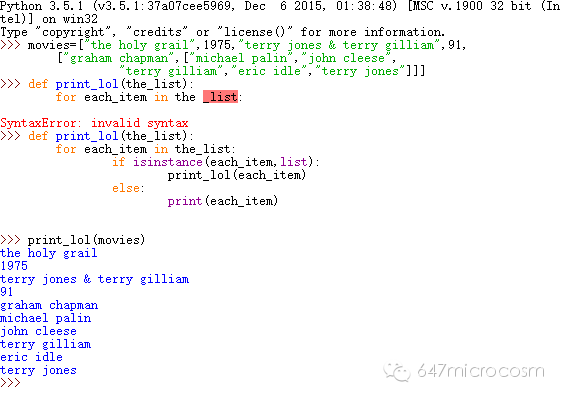
Off-topic:
Moreover, I don’t know how they got the fans. I have a feeling that the number of fans will increase greatly. In short, I was just learning and coding at the same time. I had both softwares open and the textbooks nearby. I searched while learning and coded out my learning experience. If I feel that I can continue with this, I will use it as a reminder to myself (la) to study (fen). But don’t worry about small issues like typesetting. Although I have good typesetting technology, I am not a commercial operation platform and I am too lazy to spend time on typesetting. Now I think it’s quite fun to browse the WeChat platform even if I don’t have a blog.
Python is also a good tool for sharing code [It seems that everyone can share code] Regarding the issue of editors, the author of the textbook said that the built-in IDLE is enough. , Notepad can also be used. I was speechless, okay, you win. However, IDLE is indeed not as easy to use as a real editor, because if you accidentally make a mistake and try it again, the traces of the mistake cannot be erased, and the obsessive-compulsive disorder expresses that it cannot be tolerated. For example, if you accidentally typed an extra space, it would look like this:

Oh, by the way, I forgot to mention that in the shell Alt+P means previous, Alt+N Indicates next (n and p here do not matter the case, it seems that the entire Python does not emphasize the issue of case, but in the R language, case is a very important thing). If you are using Python that comes with Mac/Linux, use Ctrl+P and Ctrl+N.
The textbook didn’t say how to save a module, so I copied the code directly into the txt document, and then renamed a .py file. It seemed feasible, and the icon changed directly. It becomes the Python icon, but when it is opened, only a black box will appear, and it will disappear after a flash. The entire saved file is also in .py format, and the black frame flashes and then disappears. I don’t know if this is correct.
The R language will ask you whether you want to save the "workspace image" every time you close it. However, I don't know what a "workspace image" is, and neither does Du Niang. I clicked No every time - anyway, it doesn't matter that I didn't really use it. I just looked for teaching materials and tried different codes to play with. There is no prompt when the Python shell is closed.
Python also has various software packages. I used to think that only open source software like R had them. Damn it. The package index is called PyPI, and the author also marked it as pie-pie, so I read it for a long time and felt uncomfortable: Skimming? Or 氕氕? Or a glimpse? It simply cannot be updated to 6.
It is said that the format of the comment code is triple quotation marks, like this: """...""", it is also possible to write it as #...#. From a visual inspection, I won’t publish shared code or anything like that when doing data analysis, so I don’t need to write comments. Comments can be written in Chinese and placed above the code.
However, there is a problem with the module operation. It always prompts "not found" and I don't know what is wrong. Is it a problem with the reading path? Ask for help.
By the way, I found that Excel is a trump card tool for data analysis, and VBA is simply omnipotent. It has been measured that Excel can do basic data analysis much faster than SPSS~
The above is the advanced level of Python ——The content of shared code, please pay attention to the PHP Chinese website (www.php.cn) for more related content!




